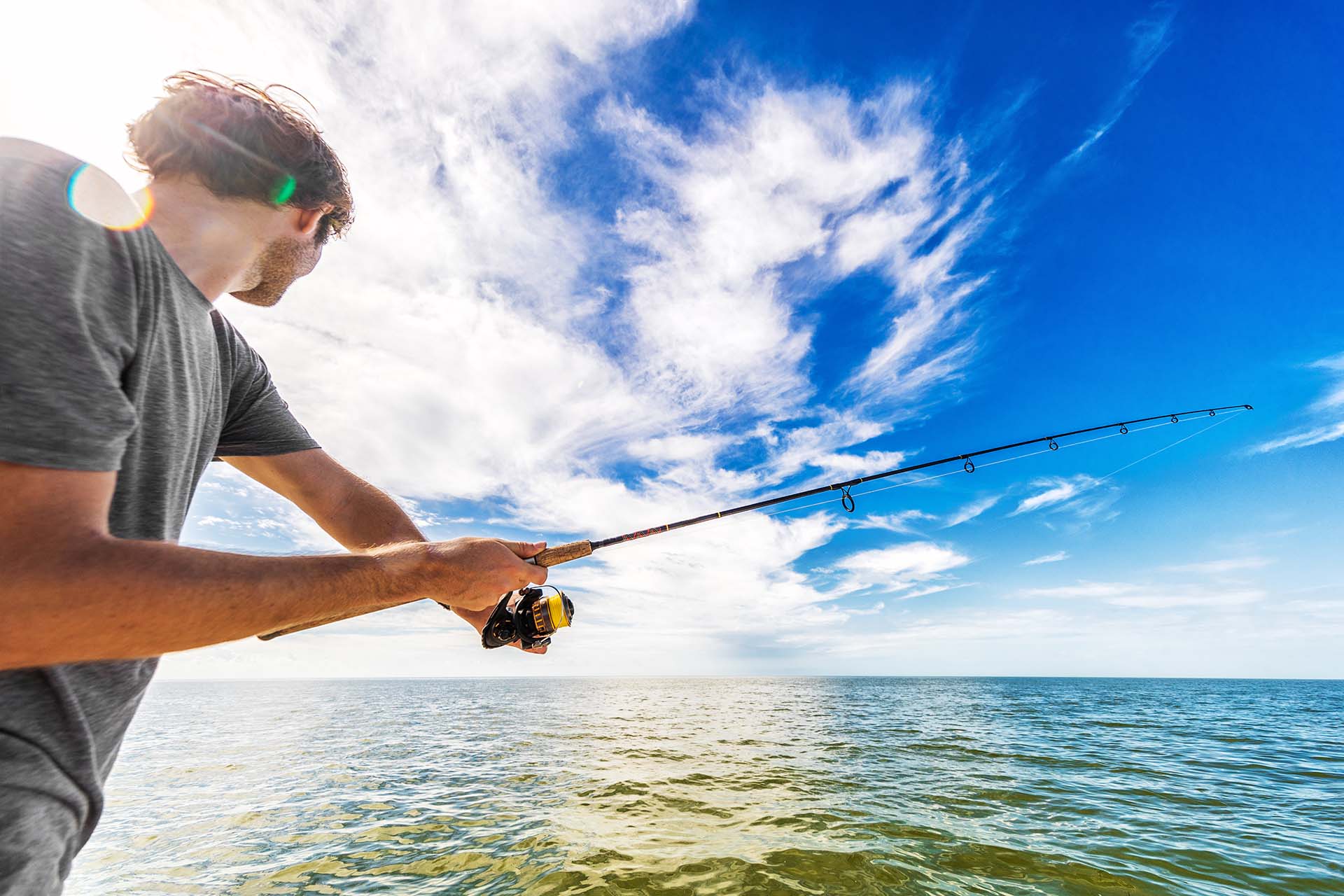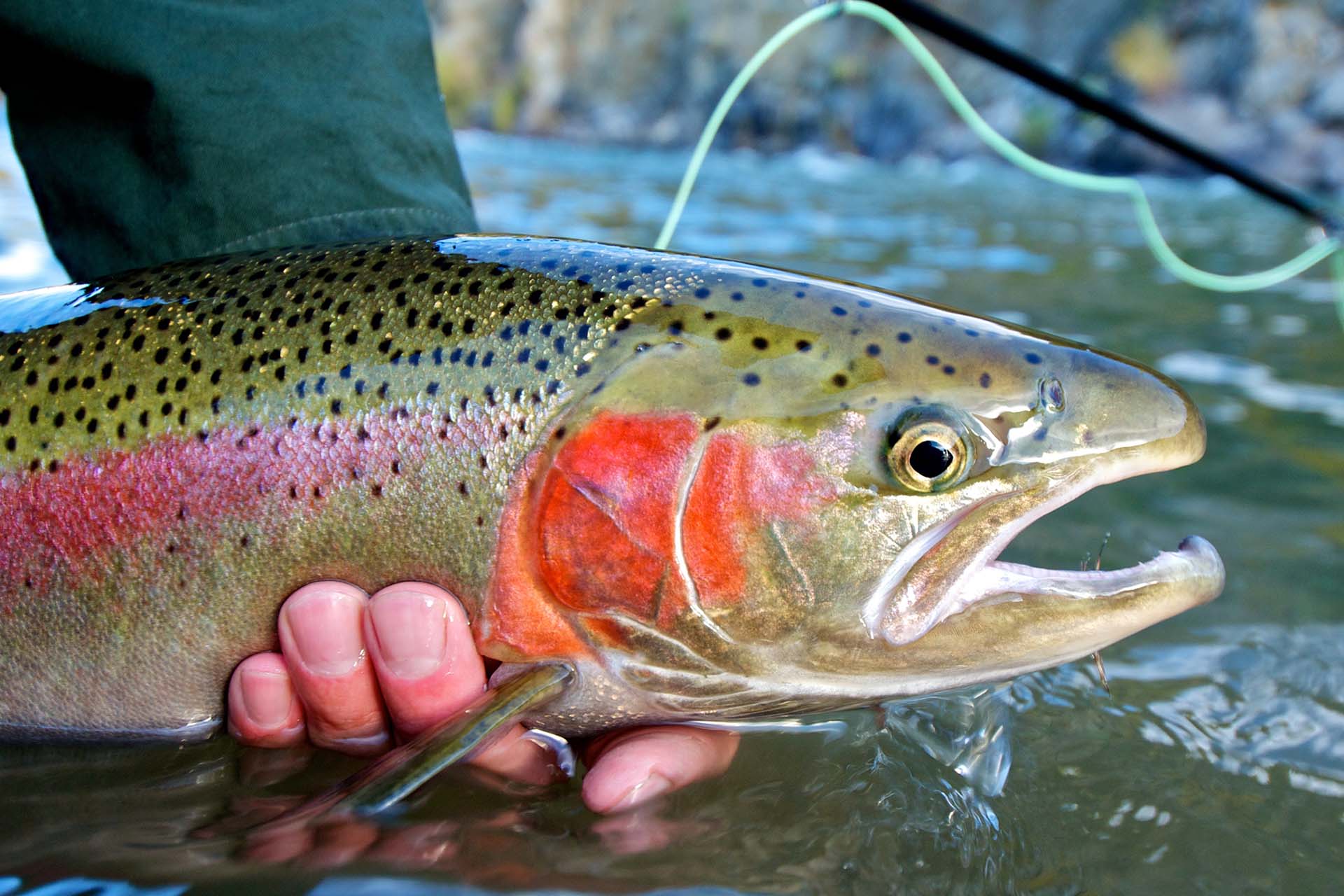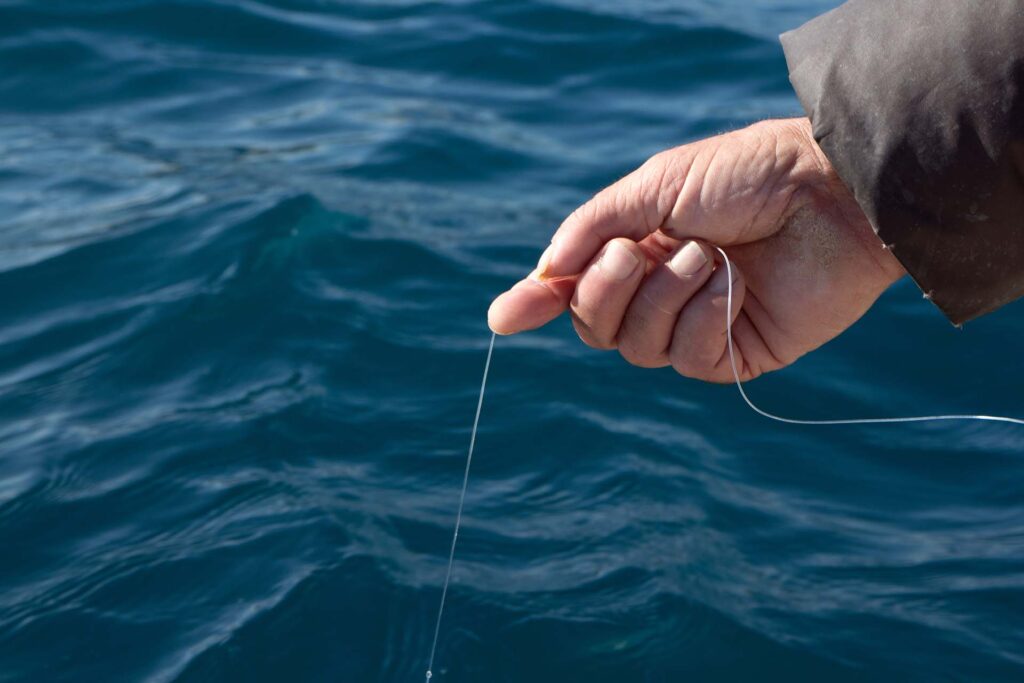Aggressive, tough to catch, and very fussy, bluefish can be a fisherman’s worst nightmare or the greatest dream come true. Success at catching them means speed and sometimes even creativity. What will help in your efforts is the best bluefish bait. If you’d like to reel in a huge bluefish and not end up with ravaged baits, follow our expert bluefish fishing tips.
Let’s Start With the Basics – What Type of Fish Is Bluefish?
Bluefish or Pomatomus saltatrix is a predatory marine fish that is characterized by its blue and green color on its sides and back. It is found in the Mediterranean Sea and the Atlantic Ocean. Fishermen have to try hard to catch them since they are known to have aggressive feeding behavior and razor-sharp teeth.
They typically live approximately 12 years, and they can be almost 40 inches long. The average length is usually 12 inches. Since they are tough fighters, they are popular game fish, even though they can also be caught commercially. Grilled or smoked bluefish has a distinct and strong flavor.
Getting Ready to Catch Them – Here’s Where You Can Fish for Bluefish
Bluefish are generally found in coastal waters along the eastern coast of North America, from Canada down to Florida. You will find schools of them in the waters of states such as Maryland, New Jersey, and New York.
They appear to swim in the Gulf of Mexico as well as in the Caribbean Sea. Follow some bluefish angling techniques, like focusing on targeting them in channels, reefs, and jetties.
Furthermore, they will avoid murky and fresh water when the temperatures are too low or high. Here are helpful bluefish fishing season tips on the fish migration patterns throughout the year.
| January & February | Off the coast of Florida |
| March & April | Migrate north to Georgia, South, and North Carolina |
| End of April | Cape Code, Massachusetts, Virginia, and Delaware |
| May, June, July, August & September | New England, Long Island, and New Jersey |
| October | When temperatures drop, blues leave New England |
| Early November | They leave New Jersey and New York area, fishes that don’t migrate that much would not leave the Gulf of Mexico |
| December | They return to the water off of Florida coast |
What Kind of Feeding Habits Do They Have?
Bluefish are voracious and opportunistic predators that would feed on different types of prey. Their aggressive feeding behavior is very well known among fishermen and the feeding frenzies that happen when they feed on the baitfish have been recorded and posted on the Internet numerous times. It is truly a mesmerizing sight to see. They eat everything from crabs, shrimp, and squid to other fishes.
So, you get the idea why bluefish bait preparation is a must. Bluefish are particularly active feeders during the summer and fall months when they migrate along the coast in search of food. When feeding, bluefish often work together in schools to corral their prey and then take turns attacking from all angles.
With their sharp teeth, they can tear through the flesh of their prey, which allows them to feed quickly and efficiently. This means that various baits and lures would work because of their opportunistic bluefish feeding habits.
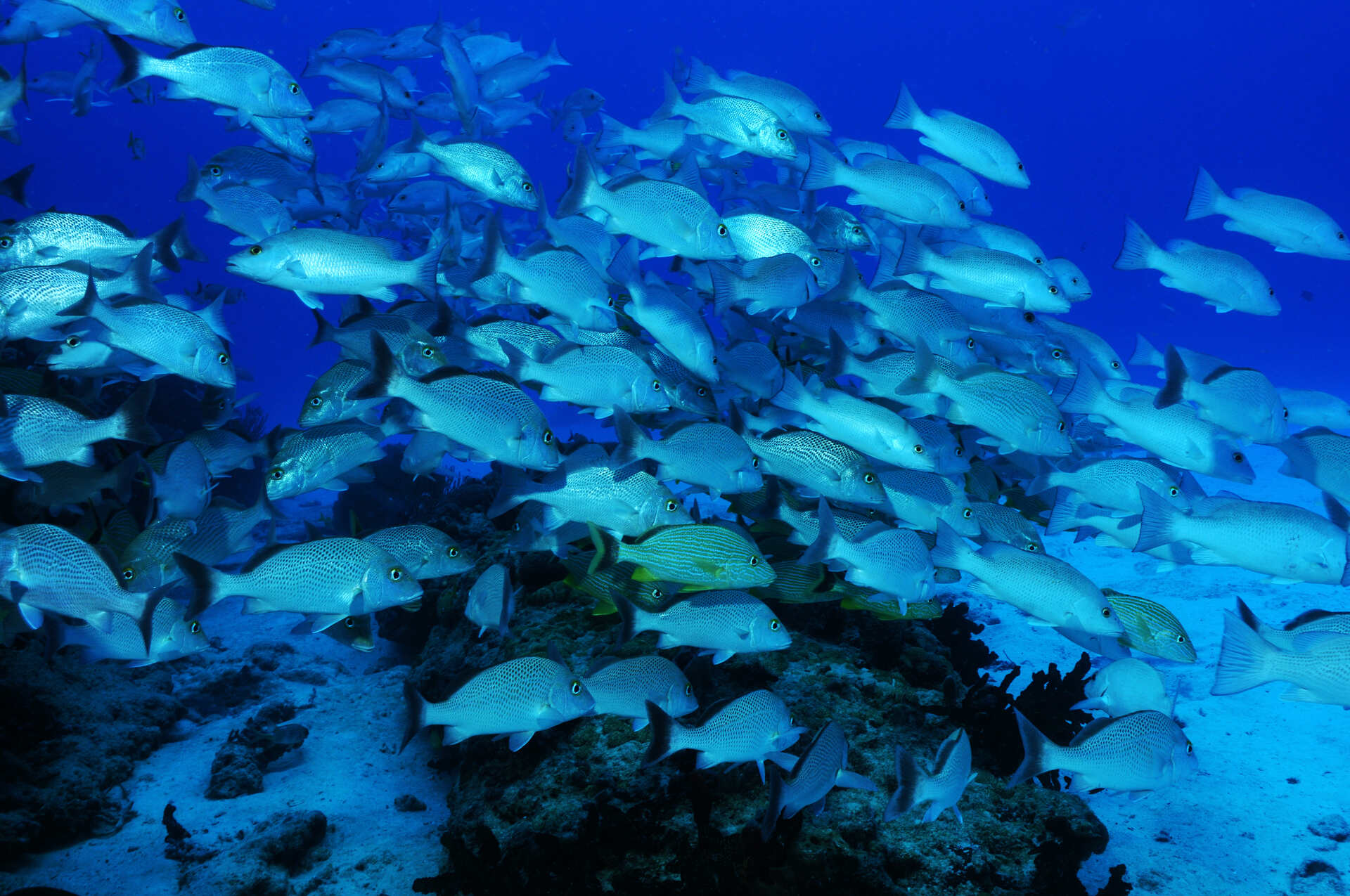
What Is the Best Bluefish Bait? Tips and Techniques for Catching Blues
Now that we know that blues feed on everything and anything, but they do it in an aggressive and quick way, we can begin to think about perfect ocean fishing baits. When there is no frenzy, the ideal technique is using live baits such as:
- Mullet,
- Shrimp,
- Squid,
- Ladyfish,
- Bunker,
- Mackerel,
- And eels.
However, when there is a frenzy you can catch numerous blues with a lure. But even the best bait for bluefish won’t help if you don’t know how to hook it properly. Here are additional tips and information.
How to Use Your Live Baits for the Blues?
It’s recommended that fishermen use big fish as fresh bait for bluefish. The greatest choices are eels or menhaden since they have an oily scent, and the blues will be attracted to them right away. Eel is a bit impractical for use since it has a different body shape, but menhaden can easily be used with a stinger hook.
Be careful about the choice of hooks since this fish attacks from all angles, and they can eat the bait without touching the hook. A stinger hook is successful when it comes to fish that attack from the rear.
The chosen blue fish bait needs to be hooked in the back, and it must not be put through the lateral line of your bait. If you do this, the bait will become paralyzed and useless. With a stinger hook, it’s recommended that you link it with a wire leader and hook it near the bait’s tail.
Will a Cut Bait for BluefishWork? Absolutely Yes, and Here’s How to Use Them
Apart from live ones, cut baits are also the best for bluefish fishing. They should be used when there is no frenzy. The scent attracts them, so there is no need for a frenzy. These effective bluefish baits need to be cut into chunks or filets.
Some of the ideal options include frozen or fresh bunker, mackerel, herring, and squid. The best hook you can use would be an extra sharp one so as to hook the fish right where you want it. However, be careful with sharp hooks since they can get hooked to your finger.
One effective technique is to rig the cut bait on a fish finder rig or a high-low rig. This allows your bait to sit on the bottom while the line remains taut, making it easier to detect bites. The great idea is to use a heavier weight to keep the bluefish bait in place in areas with strong currents. Incorporating bluefish chumming tips enhances your chances of success with cut bait.
Fishing With Dead Whole Baits Is Also a Great Option
Since bluefish are aggressive predators and any type of lure or bait when used in the right way, can work, you can also rely on dead whole baits. But what method is appropriate when fishing with them? Actually, there are a lot of effective dead whole baits for this type of fish, such as bunker, mullet, squid, and again, mackerel.
It’s important to rig the bait properly and that you present a natural-looking target. One of the best baits is the fish finder rig, which involves threading a sliding sinker onto the main line and then attaching a swivel and a leader with a hook to the other end. The dead bait can then be hooked through the lips or behind the head and cast out into the water.
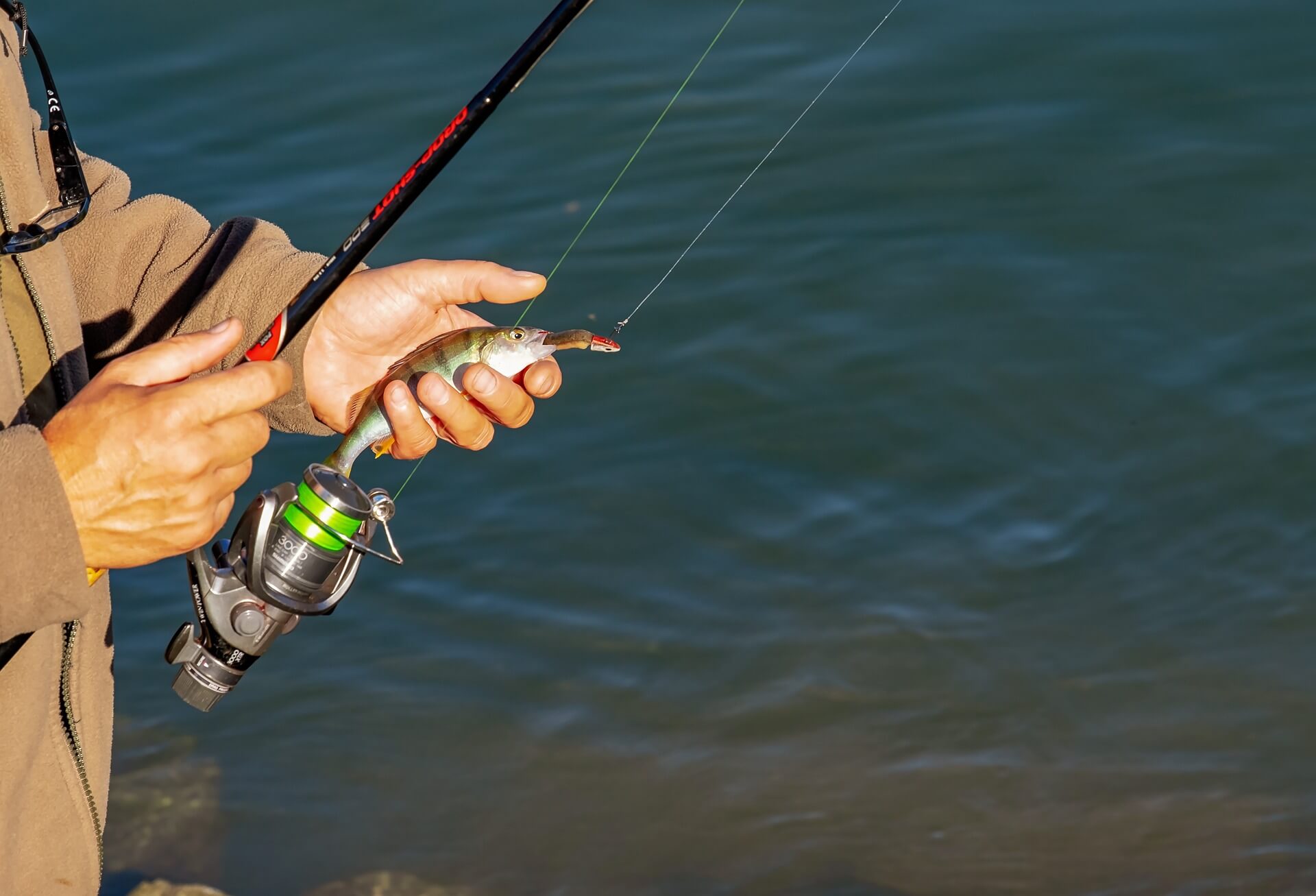
Top Bluefish Lures Are the Ideal Option When You Want to Reel in Bluefish During Frenzies
Fishing lures are your top choice when there is a frenzy. Shiny spoons and lures will be detected by the blues very quickly. What surprises some fishermen is how fast the fish attack lures during frenzies. It can happen in almost every cast.
Lures are also the type of bluefish fishing gear that is easier to use during frenzies because fishermen can remove the fish quicker off a lure than off the bait rig. They typically strike any reflective lure, and you won’t have to worry about making a perfect choice. Also, don’t forget that speed is important and that these fish strike at moving targets.
Here are some of the recommendations for a variety of lures you can use for bluefish.
Metal Jigs
You won’t make a mistake if you choose a metal jig since it can be cast long distances and imitate a small fish that blues like to prey on. Since different retrieve techniques have to be used and speed is an essential factor, you will find that metal jigs can be handled easily and effortlessly, whatever type of fishing you decide to use.
Topwater Plugs
Topwater plugs make a commotion, such as popping or splashing on the surface of the water, which is ideal if you want to get the attention of the blues. They can be worked with different types of retrieves, such as popping motion and walk-the-dog. One of the benefits of topwater plugs is the excitement that comes with watching the fish explode on the surface plug.
Soft Plastic Baits
They can be rigged in a variety of ways on a jighead or a weighted hook. The main advantage of soft plastic baits is that they imitate the fishes that blues feed on, so they can be effective at fooling the blues to strike. They come in different shapes, colors, and sizes. Depending on the specific bait you use, they can be used at various depths and with different types of retrieves, such as jigging motion, steady retrieve, and a slow drag along the bottom.
Bucktail Jigs
Metal jigs and bucktail jigs are very similar but bucktail jigs are made with synthetic skirt and hair. They are useful when you need to retrieve at various speeds. These saltwater fishing lures should be used when you need to fish around jetties and reefs. We recommend always using strong tackle with bucktail jigs so that blues can be overpowered.
Spoon
Spoons are metal lures that imitate the action of a wounded baitfish. They are extremely effective when you need to fish at different depths. Spoons should be used during frenzies or when they are feeding near the surface around schools of other baitfish. Beginners at fishing can use them effectively as well.
Best Bait for Bluefish Fishing – Tips and Techniques for Catching Bluefish
Now that you are equipped with the knowledge about the best bait for bluefish fishing, it’s time to start reeling in the blues. However, we’ve mentioned before that they are tough to fight, but still, there are some useful styles of fishing you can use when it’s challenging to finally pull the fish out of the water. Here are the best techniques you can use.
Casting and Retrieving the Best Lures
One of the most popular techniques for catching bluefish is to cast and retrieve the best lures, such as metal jigs, topwater plugs, and soft plastic baits. Varying the speed and depth of the retrieve can help trigger strikes from bluefish. So if you ever see a frenzy, just keep casting your lures and retrieving them since the fish will quickly notice the bait and strike.
Trolling With the Best Baits
Trolling involves dragging lures or bluefish trolling baits behind a moving boat. This is an excellent technique that many fishermen use when there is no frenzy. A vast area can be covered very quickly. The best trolling lures that you can use in this case are spoons and plugs, but at slower speeds, opt for jigs. Bear in mind that heavier tackle will be the most successful when trolling.
Drifting With the Best Bluefish Lures
Drifting involves using natural bait, such as live or dead baitfish while allowing the boat to drift with the current or wind. Since blues are attracted to live bait and its oily scent, you will not wait long to catch one.
Targeting Bluefish With Strategic Bottom Fishing
Bluefish can often be found near the bottom, particularly in areas with structures such as reefs, wrecks, and drop-offs. Bottom fishing with bait or jigs can be an effective way to target these fish.
Unlock the Thrill of Fly Fishing
Fly fishing for blues can be an exciting and challenging way to catch these hard-fighting fish. Make sure that you keep the fly in the water by blind casting. Even though there is no activity right away, the fish will eventually strike. The key is to move the fly fishing rod really fast.
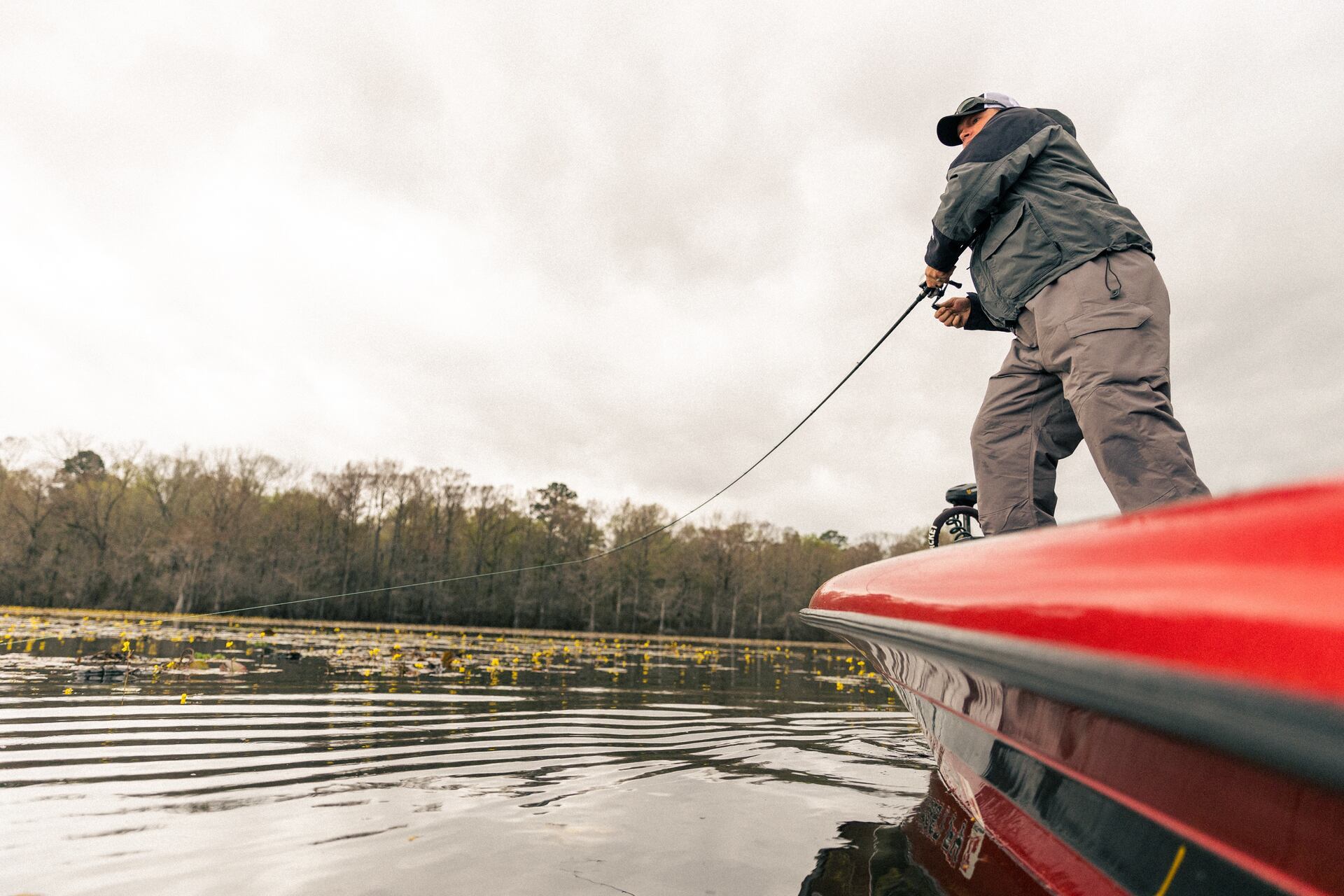
Are You Ready to Tackle This Sea Fighter? Use Our Tips, and Success Is Guaranteed
Even though bluefish are very aggressive and sometimes challenging to tackle, many fishermen get hooked on the adrenaline rush when they start pulling the fish out of the water. No wonder this species is a popular game fish that makes fishing enjoyable and exciting. If you want to become a professional at catching them, we recommend using natural baits for bluefish like squid, bunker, ladyfish, and mackerel, but during frenzies, the lures would be the top choice. Finally, we wish you good luck on your next fishing trip!
FAQ
What Is the Best Time to Catch Bluefish?
Bluefish are most active during the warmer months, typically from late spring to early fall. Early mornings and evenings are prime times for their feeding frenzies, especially during incoming tides.
How Do I Catch More Bluefish?
Increase your chances by using flashy artificial lures for bluefish, matching the baitfish they’re feeding on. Stay mobile, as bluefish schools move quickly. Experiment with different retrieval speeds to find what triggers their aggressive strikes.
What Rig to Use or Catching Bluefish?
Opt for a wire leader to prevent bite-offs, as bluefish have sharp teeth. Use a strong and durable monofilament or braided mainline. A popping cork rig or a fishfinder rig with cut bait or lures can be effective for bluefish.


